- Home
- Arthur C. Clarke
The Coast of Coral Page 2
The Coast of Coral Read online
Page 2
There is a moment, as you steam beneath the bridge and the ship’s mast seems inexorably fated to snap against that sky-spanning parapet, when you would swear that the whole titanic arch was about to turn and topple into the harbor. Anyone who has stared up the face of a skyscraper, when a few fleecy clouds are hurrying before the wind, will have experienced the same sensation. The feeling of vertigo lasts only a moment; then you are through the bridge, like a traveler of old passing under the portcullis of some castle at the end of his journey.
One seldom has any lasting memories of one’s first few days in a few country. There are too many arrangements to be made, and the problem of finding a place to live is considerably aggravated when, as in our case, you are traveling with large quantities of heavy and valuable equipment. (The first hurdle, the Australian customs, we passed with no trouble at all. They weren’t interested in our numerous cameras, an example which I heartily commend to customs departments elsewhere.) Luckily we were able to find an excellent home with a pleasant—though as it turned out somewhat high-strung—family on the north side of the harbor, commanding a beautiful view of the city. This was to be our base for the next month, while we made the final arrangements for our expedition and Mike introduced me to the numerous contacts he had made among spear fishers and underwater explorers.
It is very dangerous to make sweeping generalizations about any country, particularly when one hopes someday to return to it. I will therefore refrain from discussing What Is Wrong with Australia (though many Australians told me) or What Is Right with Australia (though still more Australians told me that). In any case, one feels that a present-day assessment, however accurate, is of little importance. Here is a country still at the beginning of its history, with a future as vast and unforeseeable as was that of the United States a hundred years ago. It is a country as big as the United States, but with less than ten million inhabitants, most of them living in a relatively narrow coastal belt. There are no inland cities, with the sole exception of the deliberately planned commonwealth capital, Canberra.
Unlike Canada or South Africa, Australia was colonized almost exclusively from Britain, and no matter how many generations they may be removed from the northern hemisphere, to most Australians the United Kingdom is still “home.” Only since the Second World War has there been a large influx of European migrants, and today the population increase from immigration almost equals that from the birth rate. These “New Australians”—particularly those speaking with outlandish accents—are often regarded with some suspicion by those of English or Scots origin. Yet the factors which gave the United States its strength are working here, and from the fusion of cultures which is still in progress a new civilization will one day emerge.
The English or American visitor to Australia is blissfully ignorant of the fact, as he sails under the harbor bridge or touches down at Mascot Airport, that he will soon have to start learning a new language. This is a problem which scarcely arises when one crosses the Atlantic, despite any statements that may have been made to the contrary. The Englishman has seen, and heard, so many American movies that he understands the meaning of most of the words he will encounter in the United States, though he may sometimes be baffled by their delivery if, for example, he gets caught in the cross fire between two Brooklyn cab drivers. And conversely, the American in England will have already read a good deal of the written language and will have been carefully warned about pavement, lorry, lift, and similar stumbling blocks.
Not so the new arrival in Australia. He will have seen no Australian movies (though there have been some good ones) and will probably have read no Australian books. He may be astonished to discover that the Australians have a vernacular whose richness, picturesqueness, and—ahem— virility put that of any other English-speaking nation in the shade. It is also highly infectious, and anyone leaving the country after a prolonged stay should allow himself at least two weeks to delouse his vocabulary.
This precaution is rendered necessary by what has been called the Great Australian Adjective, which creeps up on the visitor until he is quite unaware that he has started to use it. This sanguinary word, however, can hardly claim to be of Australian origin or exclusive usage; indeed, it embellishes the most famous line of dialogue that Bernard Shaw ever wrote. Suffice to say that only the most effete Aussie would use the expression “Not likely!” without inserting the inseparably linked adjective.
What baffles the visitor, however, are not familiar words used with unfamiliar freedom, but words he has never met before, or words that have acquired new meanings. It was some time before I realized that “crook” meant ill or, as applied to machinery, out of action; that a “bomb” was a beaten-up old car; that “grog” and “plonk” were beer or cheap wine; that “fair dinkum” meant genuine, O.K., on the level—and about a dozen other shades of rectitude. When the New Australians add their quota to the language, anyone entering the country will have to take an Anglo-Australian dictionary with him.
As Mike had already been in the country for almost a year, I was able to use him as an interpreter when things got difficult, but after two weeks I was talking good Australian in a mid-Atlantic accent.
The first problem which we had to face before our expedition could make any progress was that of ensuring that all our underwater equipment was suitable for the job ahead. This equipment fell into two classes—the cameras and the breathing gear.
The cameras I had brought with me from London comprised three Leicas, a Robot Star, and a Bell and Howell Automaster 16 millimeter movie camera. There were three waterproofed cases of various designs for the still cameras, and one for the movie camera. Though the lack of standardization was unfortunate, these were the only underwater cases readily available at the time—at least, the only ones at a reasonable price. Even so, this little collection represented an investment of about two thousand dollars.
Contrary to popular belief, most underwater photographs are taken by divers not using breathing gear, but relying solely on their ability to remain submerged long enough to get into position and to snap the shutter. When free diving in shallow water, indeed, it is often possible to take half a dozen photographs before having to return to the surface for another breath. However, there are occasions when some kind of diving equipment is essential; only a superman could use a camera fifty feet down if he had to depend upon his own lung power alone.
As everybody now knows, largely thanks to Captain Cousteau, there are two main types of diving equipment The conventional, old-fashioned kind uses a long, flexible pipe to connect the diver below the water with an air pump on the surface. The “classical” diver with his brass helme rubber suit, and lead weights is still doing most of the world’s underwater work, but the more modern and—as result of the war—more glamorous self-contained equipment has now stolen all the limelight. The frogmen are their civilian successors are quite independent of any equipment on the surface. They take their air supply with ther compressed to a very great pressure in cylinders strapped on their backs.
The world-famous “Aqualung,” evolved by Cousteau and Gagnan in the early 1940’s, is the prototype of all modern compressed-air diving equipment. With the growing popularity of underwater exploration, however, there have been almost as many variations on the original design as there have been types of automobile since the first Model T emerged from Henry Ford’s workshop.
We had both taken Aqualungs to Australia, but during the year he had spent in the country preparing for our expedition, Mike had tested the Australian-designed “Porpoise” diving equipment, and had decided that this surpassed any other equipment he had used. Instead of the two large corrugated tubes from air bottle to mouthpiece, familiar to everyone who has ever seen a photograph of the Aqualung in use, the Porpoise had a single, much smaller tube on the left side only, so that the chances of getting entangled underwater were greatly diminished. The very high pressure of over 2,000 pounds per square inch in the
air cylinder was dropped to a manageable 150 pounds per square inch by a reducing valve, and air was fed at this pressure to a demand valve actually on the mouthpiece. The function of this valve was to feed air to the lungs whenever they asked for it, at exactly the right pressure required, by balancing the pressure in the lungs against that of the surrounding water. Breathing was completely effortless and the equipment was very little handicap to movement underwater—which was more than could be said of some type of gear I have used. (I can remember one that had its reducing valve strategically placed so that I banged my head against it every time I tried to look up. . . .)
In addition—though this was a feature we hoped we should never have to employ—the equipment had a built-in buoyancy pack which provided the underwater explorer’s equivalent of a parachute. Pulling a string would jettison the heavy cylinder and leave the diver a poorer man, but at least able to float effortlessly on the surface.
The Great Barrier Reef was more than a thousand miles away, and it would be months yet before we could go there. But we were already semi-operational, and had no intention of remaining on dry land while the sea was so close at hand. Besides, there was one little question that we wanted to answer right away. Again and again we had been asked, “What will you do about sharks?” Usually we had laughed, shrugged our shoulders, and replied, “Oh, they won’t bother us.” We had found that to be true enough in Florida and the Red Sea, but from all accounts the sharks we had met there had been timid and inoffensive beasts compared to those that patrolled Australian waters.
There was only one way to find out.
III
White Water
There can be few cities in the world where it is possible to indulge in spear fishing in the suburbs, but Sydney is built around so many bays and beaches that the sea seems to lie at the end of every other streetcar route. Mike and I attracted no particular attention when, laden with flippers, face masks, and underwater cameras, we pushed our way (with a little help from the points of our spear guns) into the crowds of rush-hour passengers.
Our boarding house was not far from Balmoral Beach, a crescent of smooth sand flanked at its northern end by rocks which the waves had sculptured into fantastic shapes. I had had my first swim in Australian waters off these rocks—on a sun-scorched Christmas Day. It is a place much frequented by learner divers, as the water is shallow and deepens only slowly toward a sandy bottom twenty feet down. Near the shore there is a fringing band of kelp through which you must swim to reach the open water; until you get used to it, the continual backward tug of the long, perpetually moving tentacles of weed is distinctly unsettling. The bare flesh shrinks involuntarily from the clammy touch, and the eye peers nervously through the waving ribbons, wondering what may be concealed beneath them. It requires two or three dives to become accustomed to the kelp, but after a while you control your reflexes and no longer react with an automatic shudder to the intimate touch of an underwater tentacle.
During my first dive in Balmoral, I met nothing more dangerous than a small sting ray, which flapped slowly out of sight when I prodded it with my spear. My second dive was considerably more memorable—though just how much more I was not to know until two weeks later.
The sun was blazing, the sea calm, but the water was rather murky. Visibility was less than twenty feet, which is poor by Australian standards. I was using no breathing gear, merely mask and snorkle, and had been cruising around for half an hour on a general sight-seeing tour. Though I was carrying a seven-foot hand spear, I had no aggressive intentions. A spear is a very useful companion to have with you underwater, where you frequently meet mysterious objects which you may want to prod but feel disinclined to touch. I was also using the spear, which had been marked off in foot lengths, as a measuring rod to enable me to judge distances for photography.
My only memory of the early part of this dive is the striking temperature difference between the water on the surface and that on the bottom. It was pleasantly warm just under the waves, but twenty feet down I felt almost frozen as I coasted over the smooth sand. Temperature has a very great effect on a free diver’s ability to stay submerged, and the longest time I remained under was a mere minute, which was not a very good performance. However, it enabled me to explore a tiny cave festooned with colorful marine growths. This cave was supposed to be the occasional residence of a small and (almost) harmless shark known as a wobbegong, but he was out when I called.
One does unaccountable things underwater, through irresponsibility, oxygen starvation, or sheer joie de vivre.I had grown tired of swimming, and decided to relax. My relaxation took the form of winding myself round my spear, like a ball of wool on a knitting needle, and sinking slowly into the depths. Actually there was a tenuous justification for this peculiar behavior: I wanted to see if my buoyancy altered as I changed from the outstretched to the curled-up position. I never finished the experiment (which for that matter, is still uncompleted) for at that moment I realized I had company.
A large shark was circling me at the very limit of vision its outlines completely unmistakable even through the underwater haze. Though all its details were lost, no one could have failed to identify that pointed nose and torpedo sleekness. It was a swiftly moving shadow, giving an overwhelming impression of effortless power. I watched it make half a circuit of me—which took only seconds though it must have covered fifty feet in that time—before I made any move myself.
I was much too excited and interested to feel any sense of danger; my only fear, indeed, was that the shark would go away before I could get a good look at it. When it showed no sign of coming closer, I took a deep breath, dived, and swam toward it as quickly as I could. But it is as useless to try and catch a shark as it is to try and swim away from one; all that happened was that the creature broke away from its circuit and disappeared at once into the haze.
The whole incident lasted less than a minute, and took place about thirty feet from the shore. Mike had been sunning himself on the rocks while this was going on, and when I lost sight of the shark I popped my head above the surface to shout to him: “Mike! Bring the camera! There’s a shark here—a big one!” Then I dived under again, having a prejudice against floating with my head blindly out of water, particularly in circumstances such as these.
Mike joined me at once, and we swam around for ten minutes in the hope that the shark would reappear. When we finally gave up the search, we emerged to find a young spearman squiring his girl friend into the water. We told them of my encounter, but that did not stop them from going ahead—though they took their time over it. Perhaps they did not believe us and thought we were crying “Wolf.” If they disbelieved us then, I am certain that they remembered our warning later, in view of what happened at this precise spot sixteen days afterward.
I am fairly sure that this shark was larger than I was; it is impossible to estimate accurately the size of an object seen by outline only, at the limit of visibility. Judging by the angle of vision it subtended, it must have been about ten feet long, I felt sorry, afterward, that I had not been a little more patient and remained motionless rather longer, instead of swimming toward the shark and so scaring it.
If my first introduction to Australian sharks was of the kind that breeds familiarity, the second was of the kind that breeds contempt—and it occurred on the very next day. We had now made contact with most of the leading skin divers in Sydney, who were hospitably determined to put on the best show which their waters could provide.
It was a pleasant, sunny morning when our good friend Reg Keegan, who looks as if he spends all his time lifesaving on Bondi Beach instead of running a Sydney pub, drove us to Bilgola Bay, about thirty miles north of the city. This bay has a fine sandy beach, across which the waves were breaking in endless lines of surf. But we were not interested in the great crescent of sand and the old-fashioned people who were merely bathing off the beach. Our objective was the rocky headland at the north of the bay, against which waves we
re crashing with a violence which did not seem to worry our companions in the least. By this time we had been joined by several other massive Australians, among them Keith Whitehead, who has swum for his country in the Olympic games and who would therefore, I felt, be a useful fellow to have around if I lost my flippers. (I am quite happy in the water without flippers, but don’t actually get anywhere, however much effort I put into it. This information may encourage other nonswimmers to take up skin diving.)
It looked dangerous enough going in off these rocks, with the waves thundering against them and the spray breaking over us as we sorted out our equipment. But that was not good enough for Keith; he had a better idea. He wanted us to climb right round the headland, making our way (complete with weight belts and the rest of our diving equipment) for a couple of hundred yards over enormous broken boulders until we had rounded the tip of the promontory and had got into the next bay. I cannot remember the purpose of this maneuver, or why we let ourselves get talked into it, but will merely remark that since taking up underwater exploring I have done more mountaineering than in the whole of the rest of my life.
Four of us made the climb round the headland, and presently stood in a small rocky cove with the waves dashing against our feet. It was not too hard to get into the water, if you dived in at the top of a wave, but the problem of getting out again at the other end looked as if it might be a little more difficult. Any doubts that I had were considerably increased when the fourth member of our party, after one look at the heaving seascape beneath us, announced his intention of staying on land. He said he felt cold, and was afraid of getting cramp on the long swim back. This perfectly reasonable excuse, which I felt very much inclined to borrow, was greeted with jeers by Keith, but his countryman stuck to his guns and began the tedious scramble back over the rocks around the headland.

 Time's Eye
Time's Eye The Sentinel
The Sentinel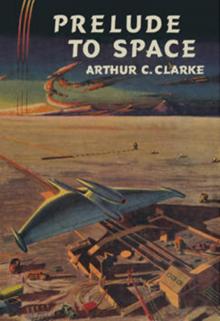 Prelude to Space
Prelude to Space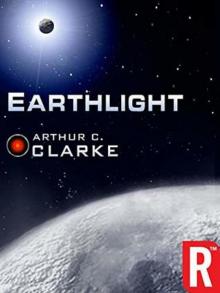 Earthlight (Arthur C. Clarke Collection)
Earthlight (Arthur C. Clarke Collection)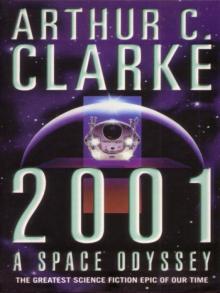 2001: A Space Odyssey
2001: A Space Odyssey Against the Fall of Night
Against the Fall of Night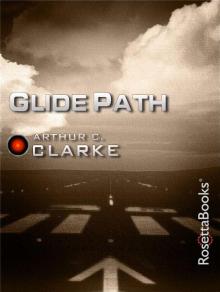 Glide Path
Glide Path The Lost Worlds of 2001
The Lost Worlds of 2001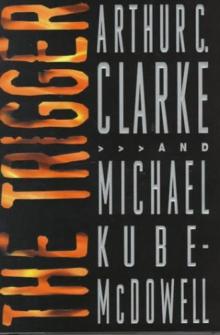 The Trigger
The Trigger Reach for Tomorrow
Reach for Tomorrow Islands in the Sky
Islands in the Sky The Songs of Distant Earth
The Songs of Distant Earth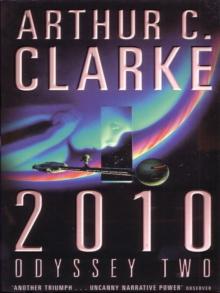 2010: Odyssey Two
2010: Odyssey Two Childhood's End
Childhood's End 3001: The Final Odyssey
3001: The Final Odyssey The Fountains of Paradise
The Fountains of Paradise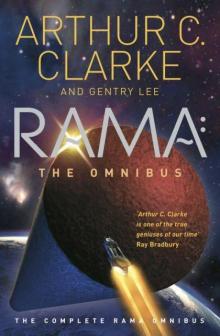 Rama: The Omnibus
Rama: The Omnibus The Hammer of God
The Hammer of God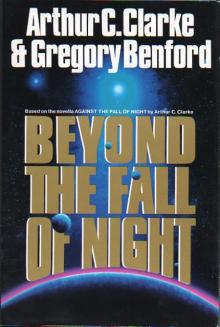 Beyond the Fall of Night
Beyond the Fall of Night Tales From Planet Earth
Tales From Planet Earth 2061: Odyssey Three
2061: Odyssey Three Tales From the White Hart
Tales From the White Hart The City and the Stars/The Sands of Mars
The City and the Stars/The Sands of Mars The Star
The Star Imperial Earth
Imperial Earth The Light of Other Days
The Light of Other Days Firstborn
Firstborn The Other Side of the Sky
The Other Side of the Sky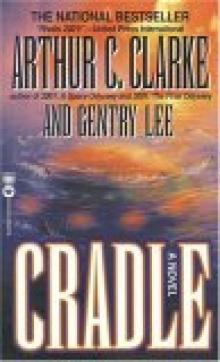 Cradle
Cradle The Wind From the Sun
The Wind From the Sun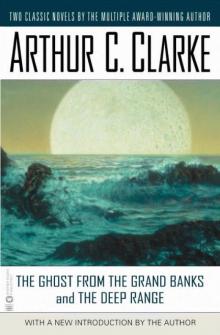 The Ghost From the Grand Banks and the Deep Range
The Ghost From the Grand Banks and the Deep Range The Deep Range
The Deep Range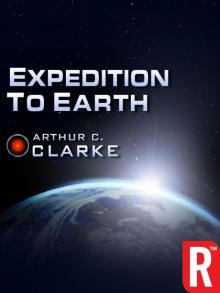 Expedition to Earth
Expedition to Earth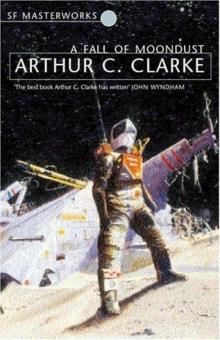 A Fall of Moondust
A Fall of Moondust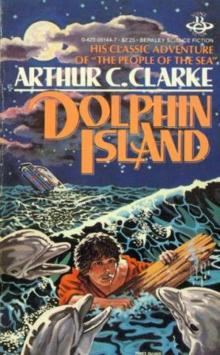 Dolphin Island (Arthur C. Clarke Collection)
Dolphin Island (Arthur C. Clarke Collection) Richter 10
Richter 10 The City and the Stars
The City and the Stars Tales of Ten Worlds
Tales of Ten Worlds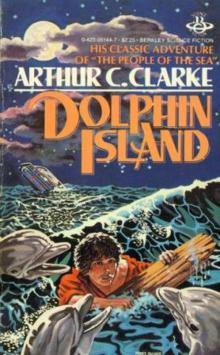 Dolphin Island
Dolphin Island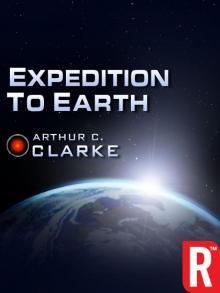 Expedition to Earth (Arthur C. Clarke Collection: Short Stories)
Expedition to Earth (Arthur C. Clarke Collection: Short Stories) Sunstorm
Sunstorm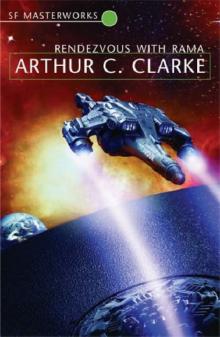 Rendezvous with Rama
Rendezvous with Rama The Collected Stories of Arthur C. Clarke
The Collected Stories of Arthur C. Clarke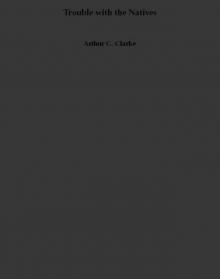 Trouble with the Natives
Trouble with the Natives Rama Revealed r-4
Rama Revealed r-4 The Sixth Science Fiction Megapack
The Sixth Science Fiction Megapack Firstborn to-3
Firstborn to-3 The Ghost from the Grand Banks
The Ghost from the Grand Banks Into the Comet
Into the Comet The Fires Within
The Fires Within 2061: Odyssey 3
2061: Odyssey 3 The Ninth Science Fiction Megapack
The Ninth Science Fiction Megapack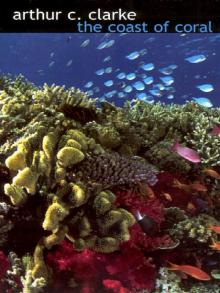 The Coast of Coral
The Coast of Coral The Ghost from the Grand Banks (Arthur C. Clarke Collection)
The Ghost from the Grand Banks (Arthur C. Clarke Collection)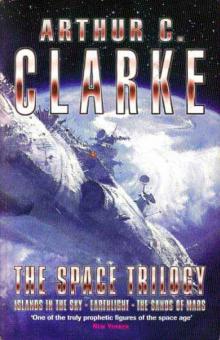 The Space Trilogy
The Space Trilogy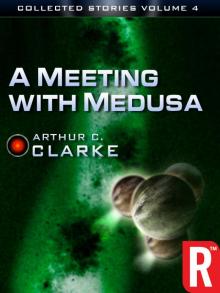 A Meeting With Medusa
A Meeting With Medusa 2001: A Space Odyssey (Arthur C. Clarke Collection: The Odyssey)
2001: A Space Odyssey (Arthur C. Clarke Collection: The Odyssey) Islands in the Sky (Arthur C. Clarke Collection)
Islands in the Sky (Arthur C. Clarke Collection)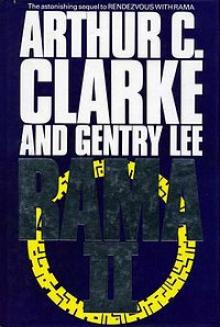 Rama II r-2
Rama II r-2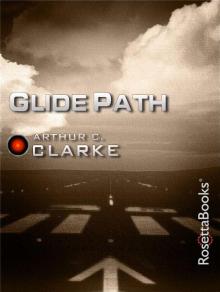 Glide Path (Arthur C. Clarke Collection)
Glide Path (Arthur C. Clarke Collection) The Sixth Science Fiction Megapack: 25 Classic and Modern Science Fiction Stories
The Sixth Science Fiction Megapack: 25 Classic and Modern Science Fiction Stories Tales from the White Hart (Arthur C. Clarke Collection: Short Stories)
Tales from the White Hart (Arthur C. Clarke Collection: Short Stories) The Reluctant Orchid
The Reluctant Orchid